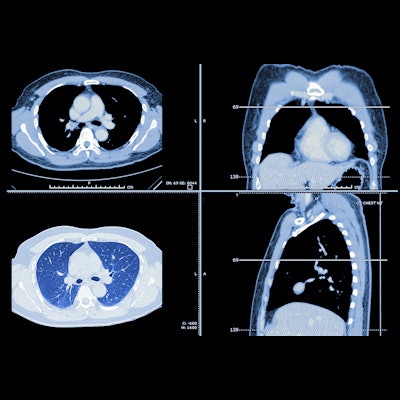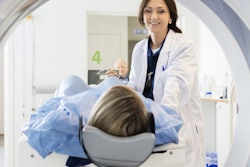
There are particular CT findings that correlate with histologic data and identify early interstitial lung abnormalities, but sometimes findings that appear normal on CT are abnormal on histopathology, a Belgian-led research team has found.
The results highlight the fact that more work needs to be done to effectively assess lung abnormalities that could indicate interstitial lung disease, according to a study published on 20 December in Radiology.
"Future studies are required to further refine and validate the concept of interstitial lung abnormalities and their relation to the genesis and progression of interstitial lung disease," wrote Stijn Verleden, PhD, a post-doctoral researcher at Antwerp University and Katholieke Universiteit Leuven (KU Leuven) in Belgium, and colleagues.
Although interstitial lung abnormalities found on lung CT scans can indicate early interstitial lung disease, the condition's histopathologic correlates to imaging results remain unclear, they noted. To address the knowledge gap, they conducted a study that included data from eight lung specimens taken between 2010 and 2021 from six donors with radiologically confirmed interstitial lung disease. The tissue was inflated, frozen, and scanned with CT and micro-CT imaging, then sampled via core biopsy. The group evaluated any associations between the imaging and histopathologic findings.
CT findings included ground-glass opacification, reticulation, and bronchiectasis, while micro-CT and histopathologic examination showed that lung abnormalities were often paraseptal and associated with fibrosis and lymphocytic inflammation.
Of concern, however, is that histopathologic results showed degrees of fibrosis that appeared normal on CT imaging.
"[We] have demonstrated that the degree of fibrosis in relatively normal-appearing lung regions with histopathologic evidence of moderate fibrosis ... and inflammation ... was underestimated at CT," the authors wrote.
The study findings underscore how it's "difficult to effectively characterize interstitial lung abnormalities with current imaging techniques," wrote Dr. Jean Jeudy of the University of Maryland in Baltimore in an accompanying commentary, cautioning that, when it comes to interstitial lung abnormalities, it could be that "the more we learn, the less we know."
"Patients with advanced features of fibrosis have been shown to be at highest risk for progression and adverse outcomes," he noted. "However, even patients with mild disease may have underlying fibrosis that could be missed with CT."
Yet it's likely that further imaging research will improve the diagnosis of early interstitial lung disease, according to Jeudy.
"Newer advances in scanner technology and artificial intelligence will improve the accuracy of our imaging," he concluded. "With improved imaging biomarkers, the definitive goal will be to identify which patients will develop progressive disease and why."



















